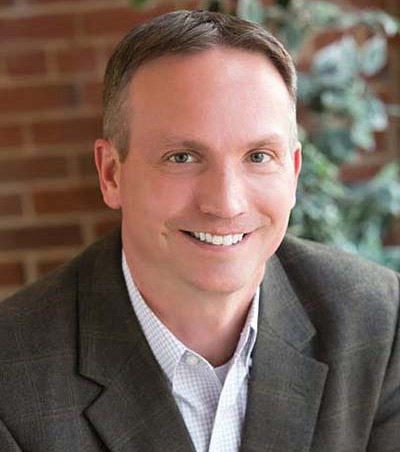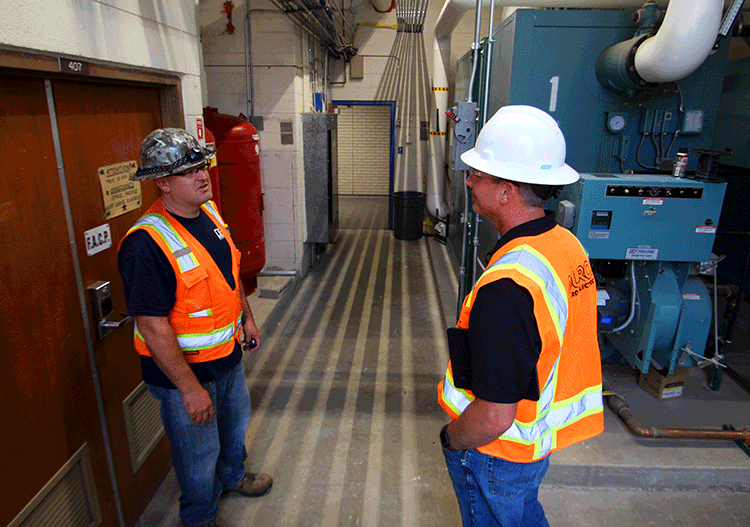2021 CEOs Who 'Get It'


Jeremy Kucera
President
Duro Electric Co.
Englewood, CO
Duro Electric provides preconstruction, construction services, design-build/design-assist, estimating, maintenance, and emergency response services to the Colorado market. Duro Electric employs 175 workers.

Describe your personal journey to becoming a CEO who “gets it.”
My journey began from a young age working with my father’s electrical company in South Dakota. After high school, I attended South Dakota State University and was in the electrical engineering program. After one year of schooling, I realized that was not the career I wanted. I was more of a hands-on guy!
I went back home and continued working for my father’s company and achieved my journeyman’s license. While working, I volunteered to join the South Dakota National Guard as a combat engineer. I quickly moved up to the rank of staff sergeant and was deployed to Iraq in support of Operation Iraqi Freedom from 2004 to 2005. After deployment, I returned home and continued working.
One day I woke up and realized I wanted to see and do more and moved to Denver. I had a dream of building bigger and more complex projects. Once I arrived, I quickly found a new job working as a foreman for Duro Electric. After working in the field for five years, I moved into the office environment to become the business development and preconstruction manager for the company. I learned a lot of valuable business-related experience during these years and was promoted to president in 2017.
Throughout my many years in this trade and in the military, I have learned and been trained on many business and safety topics that have helped give me an understanding of what it takes to “get it.” First, you need to be aware of who you are as a person and use that self-awareness to make improvements to yourself. Every day you need to learn something from yesterday, then use that knowledge to move forward. You take all those experiences – good and not so good – and use them to make yourself and the company be the best they can be. Once the company culture is improved, great things will happen. People will start taking ownership for their actions and work to improve in every way they can.
What is the biggest obstacle to safety at your organization, and how do you work to overcome it?
I would have to say that one of the biggest obstacles to safety at Duro Electric is getting the message out to all employees. The bulk of our workforce is spread across multiple construction projects throughout the state. To overcome communication issues, we meet regularly with the field leadership teams. Weekly meetings are held with the preconstruction and project management team, and quarterly we meet with the field superintendents and foremen. At every meeting, safety is one of the first things we talk about. I speak to current safety issues and my safety manager provides updates on any ongoing safety concerns and initiatives. I also have my staff publish two newsletters every month. One focuses on Duro Electric operations (to include all departments and leadership updates), and the other is specific to safety. The operational newsletter has a space reserved for comments from myself (titled “Jeremy’s Corner”). I talk about how the company is performing and address safety issues relevant for that month. I take every opportunity to include our safety manager in all departmental meetings; it helps to set the tone of the meeting and get everyone thinking about safety.
Why is safety a core value at your organization?
Safety is an integral part of who we are and how we do business. When you look at our values, it starts with safety first, followed by financial success, employee satisfaction and teamwork, and customer satisfaction. We understand that safety in an inherent part of doing business, and everything stems from performing work safely. If employees feel safe and comfortable in their work environment, they will perform better, productivity and efficiency will increase, and they will provide a better product to our customers. In turn, the business is awarded more contracts and makes money. It’s that simple. You cannot succeed in this industry without a focus on safety. It takes a different mindset and a willingness to have faith in and empower your employees to do what’s right and act when necessary.
How do you instill a sense of safety in employees on an ongoing basis?
During the interview process, we talk about our workplace safety program and culture. We are looking to see if safety is a part of their values and if they will be a good fit for the organization. During the new-hire orientation, they receive a card – signed by me – talking about my commitment to safety and giving them the authority to stop and take action if they see something wrong. I get out to the jobsites and talk with the workers. I lead by example (I wear my gloves, safety glasses, hard hat, etc.), and I ask them how the job is going. I participate in their morning stretch and flex exercises and make myself available for questions. We have weekly meetings with the project management staff and the first thing we talk about is safety. During our strategic planning sessions, safety is the first item on the plan. Together with the executive leadership team, we identify projects and deliverables that will enhance our safety culture and performance. I also review and respond to all recordable accidents within the company. Together with my leadership team, we review the incident (along with the worker, their supervisor and the project manager) to identify operational weaknesses and areas for improvement. I am constantly looking for opportunities to incorporate safety into our routine.
How does your organization measure safety? What are the leading indicators that show you how safe your organization is, and where do you see room for improvement?
I meet with my safety manager biweekly to review all projects and happenings with the safety department. We look at budgets, safety program updates, workers’ compensation claims, employee training and initiatives, safety committee updates, fleet safety, our status on obtaining the OSHA VPP status, and any additional topics as necessary. We don’t have a lot of workplace injuries and therefore must look at other metrics for safety performance. My safety manager distributes a safety dashboard to the field leadership team every month that looks at current statistics within the company, but also addresses unsafe behaviors and observations collected from jobsite audits (performed by the safety manger, project managers and the vice president of operations). In addition, he also distributes a fleet dashboard report to all company drivers addressing the same issues (driver performance and driver habits obtained from our fleet telematics program). We send out a periodic survey to the employees to gauge our safety performance and effectiveness.
We are working to incorporate our employees more into the process. We have a self-directed safety committee that is helping to lead the way with identifying training needs and looking at opportunities to enhance employee learning and engagement.
What role does off-the-job safety play in your organization’s overall safety program? What types of off-the-job safety and health programs does your organization offer to employees?
The past couple of years we have started to focus on total worker health. These efforts include providing training and resources for physical health as well as mental wellness. I understand that I need my workers safe on and off the job, as well as mentally healthy. If they have issues or problems outside of work, that directly impacts their ability to perform the job to our standards and makes for a potentially unsafe workplace. We are not a large organization and every employee has a huge impact on our operations. Having just one person out can significantly impact the project they are working on.
What have you done to support employee mental health and well-being within your organization?
As stated previously, total worker health is a big initiative for us here at Duro. I have supported and encouraged our safety manager to explore community resources and programs that can assist our workers with mental wellness. In addition, we participate in national campaigns such as Safe + Sound Week and Suicide Prevention Month. I support our safety manager in presenting suicide prevention trainings both within the company and to our association partners. I want to spread the message that mental wellness is a problem in the construction industry and Duro supports our employees in all aspects of safety and health.
Post a comment to this article
Safety+Health welcomes comments that promote respectful dialogue. Please stay on topic. Comments that contain personal attacks, profanity or abusive language – or those aggressively promoting products or services – will be removed. We reserve the right to determine which comments violate our comment policy. (Anonymous comments are welcome; merely skip the “name” field in the comment box. An email address is required but will not be included with your comment.)


